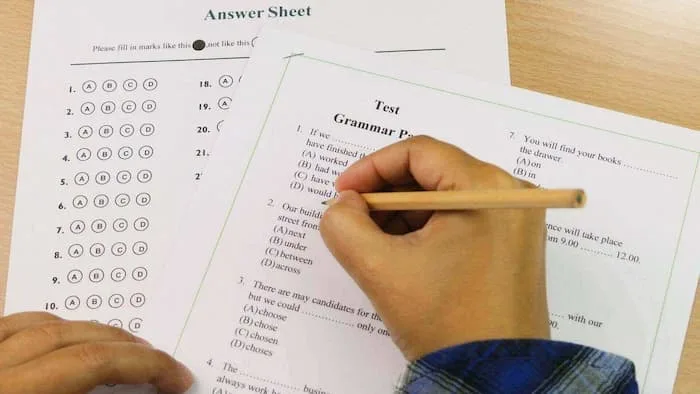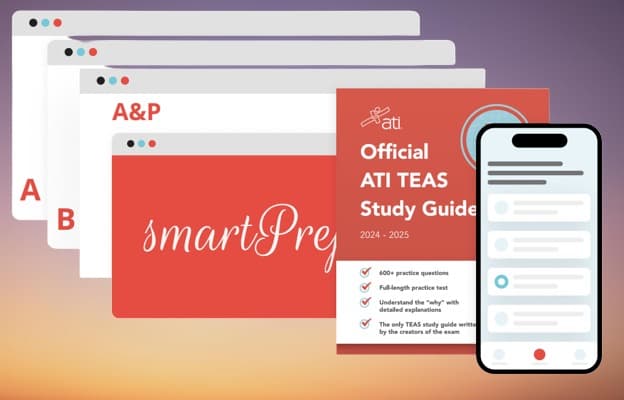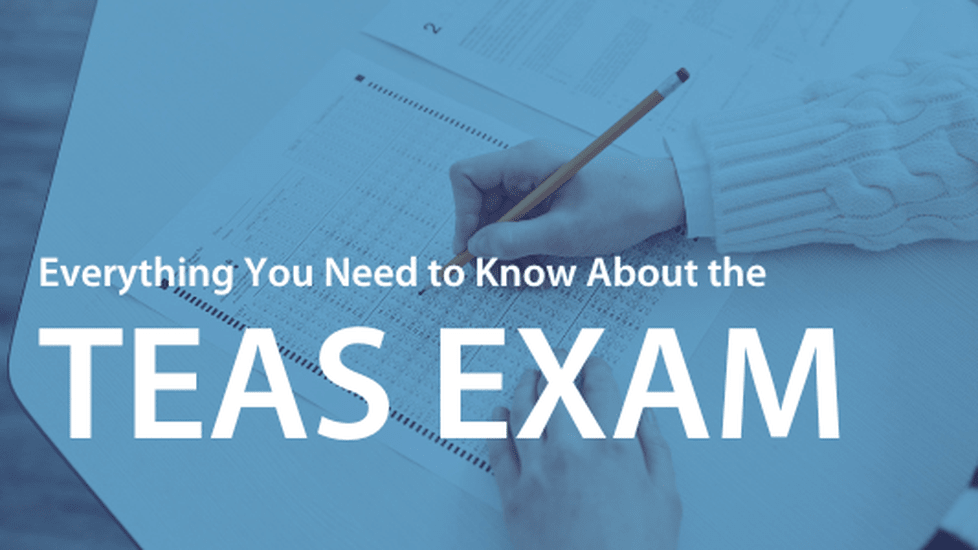Introduction
The TEAS exam’s grammar section can feel daunting, but with focused practice, you can conquer it! Strong grammar is essential for both understanding written information and clearly conveying your thoughts in the writing section. Nurses, in particular, rely heavily on clear and concise communication for accurate documentation, patient education, and collaboration within the healthcare team.
This TEAS Grammar Practice Test will put your skills to the test and help you identify areas for improvement. After taking the practice test, keep reading to explore the TEAS Test Grammar Essentials you need to master to ace the exam!
Essential Grammar Rules For The TEAS Test
Remember these grammar rules as you take the TEAS grammar practice test. They will help you create meaningful and grammatically correct sentences.
1. Observe Subject-Verb Agreement
The subject-verb agreement concept means that the verb and the subject must match, whether plural or singular. This rule is important as it enhances coherence and clarity in writing. Students must be able to identify errors easily. Follow these tips to identify errors in the subject-verb agreement:
- First, identify the verb and the subject
- Determine if the subject is plural or singular
- Check the verb form to ensure it conforms to the subject, e.g., “run” for a plural subject and “runs” for a singular subject.
How To Achieve Proper Subject-Verb Agreement
- Observe the indefinite pronouns – some pronouns are always plural, e.g., many, few, while others are always singular, like each, every one.
- Know the collective nouns—they are singular when taken as a unit and plural if the members act individually, e.g., team or group.
- Intervening phrases—Always ignore phrases that appear between the verb and subject and do not affect the agreement in any way. For example, “The bouquet of roses smells (not smell) lovely.”
- Compound subjects – subjects joined by “and” are plural. Subjects joined by “nor” or “or” agree with the closest subject to them. For example, “Neither the cat nor the dog is here”/” The cat and the dog are friends.”

2. Have Great Pronoun Usage
There are different types of pronouns you should be aware of. They include:
- Subject pronouns are used as subjects in a sentence. Examples are you, I, she, it, they, and we.
- Object pronouns are used as objects of a preposition or a verb. Examples are you, him, her, them, and us.
- Possessive pronouns – these pronouns show possession or ownership. Examples include, your, their, its, his, her, my.
How To Achieve Proper Pronoun Case Usage
Proper pronoun case usage ensures pronouns are correct depending on their purpose in a given sentence. For example, in the Subject case, “He is happy.” (subject pronoun). As for the pronoun-antecedent agreement, the pronoun must agree with the antecedent regarding gender, number, and person. For example, a singular antecedent should go with a singular pronoun, e.g., “Every student must bring his or her book.”
3. Observe Verb Tenses
Verb tenses are another important sector in the grammar section of the TEAS test. Some common verb tenses include:
- Present tense: These represent actions that happen regularly or are happening now. For example, “She walks to church every Sunday.” “She is walking to church right now.”
- The past tense describes an action that happened in the past. For example, “She walked to church last Sunday.”
- Future tense – these tenses describe actions that will happen in the future. For example, “She will walk to church on Sunday.”
How To Identify and Correct Tense Errors
You can identify and correct tense errors by:
- Identifying the time frame – the verb tense should match the action’s time frame whether it is past or present tense
- Maintain consistency—ensure you maintain the same tense throughout the sentence or in connected sentences unless there is a need to change. It would be incorrect to say, “She walked to school, and she eats lunch.” The correct sentence would be “She ate her lunch and walked to school.”
- Use contextual clues – use the context to determine the correct tense to use. For example, saying, “By the time she arrived, he leaves” would be wrong. You would rather say, “By the time she arrived, he had left.”
4. Use Commas Correctly
Commas are crucial in a sentence structure. They can be used in different ways as shown below:
- Introductory phrases – place a comma after an introductory phrase, clause, or word. For example, “After the meeting, we went home.”
- Independent clauses—A comma should be placed before a conjunction connecting two independent clauses. Examples of conjunctions include nor, for, and, but, yet, so, or.
- Commas are also used to separate items when listing items. For example, in a sentence, “Khalid bought oranges, bananas, mangoes, and pineapples.
- When detailing nonessential phrases, use commas when referring to nonessential information. For example, “My brother, who lives in New York, is visiting next week.”
Sentence Correction Strategies To Use
Grammar is essential in the nursing career, and so is clear communication. Nursing students should know how to create clear, concise sentences that relay meaningful information. They should also know how to correct incorrect sentences in the TEAS exam. Here are ways to correct grammar errors in sentences:
- Assess the subject-verb agreement – check whether the subject-verb agreement agrees in numbers. Whether they are both singular or plural.
- Read the sentences keenly – ensure you read the sentences to understand the structure and meaning. That will help you single out the incorrect parts.
- Check for verb tense consistency. The verb tenses should be consistent throughout the sentence. If they are in the past tense, everything should be in the past tense.
- Assess sentence run-ons and fragments—every sentence should be well punctuated and complete. It should not leave the reader hanging by introducing a new thought or idea but failing to complete it. For example, “Although he went to the store.” it should be, “Although he went to the store, he forgot to buy milk.”
- Correct punctuation – check how commas and other punctuation marks are used in the sentence. They should be used exactly as intended to relay information.
Common Grammar Mistakes to Avoid
The TEAS grammar practice test should help you weed out common grammar pitfalls to avoid during the exam. Among the grammar mistakes to avoid include:
- Subject-verb disagreement – as mentioned earlier, the subject must agree with the verb whether in singular or in plural. It would be incorrect to say “The list of items are on the table.” The correct sentence is “The list of items is on the table.”
- Pronoun case errors – this is another error most students make. Always ensure all pronouns are in the correct case depending on the message they intend to pass across in the sentence. Errors are mainly observed in possessive, objective, and subjective cases. For example, incorrect; “Me and him went to the store.” Correct; “He and I went to the store.”
- Incorrect verb tense – verb tenses ought to be appropriate and consistent in the sentence. It is incorrect to say “She was cooking when he arrives.” The correct statement should be “She was cooking when he arrived.”
- Misplaced and dangling modifiers – modifiers should always be next to the phrase or word they modify. A dangling modifier does not have a clear subject to modify. An incorrect statement, “She almost drove her kids to school every day.” The correct sentence is, “She drove her kids to school almost daily.”
Making these mistakes in communication can cause your sentence to lack meaning and fail to pass the intended message. If your sentences are not properly punctuated, the recipient could also get the wrong information. That is why it is crucial to avoid these mistakes, especially in the medical field, where lives are at stake.
How To Master Grammar For The TEAS Test
To master the grammar section of the TEAS test, you need to practice more and more.
1. Use Practice Exercises
You can start by taking a TEAS grammar practice test. Consider completing as many quizzes as possible that target different grammar areas, such as verb forms, pronoun-antecedent, or subject-verb agreement. Endeavor to answer many practice questions where you will carefully analyze the questions and pick the grammatically wrong answers. You could also practice with practice lessons from online resources and websites like the ATI TEAS site. These resources will have important and detailed explanations for better understanding.
2. Use Effective Study Techniques
To review and retain the grammar section concepts, it is advisable to try out some TEAS test study tips. These are techniques that will help you prepare and pass the grammar section. Here are the study techniques to implement:
- Engaging actively with the material and even creating your sentences to demonstrate your level of understanding
- Reviewing grammar rules and explanations regularly while focusing on the challenging areas
- Taking as many online grammar practice activities and games on reputable online sites
- Taking full-length grammar tests to assess your progress and evaluate your skills
3. Use Answering Strategies
Grammar section questions should not be too complicated if you are well prepared. Learn these answering strategies to handle the section with ease:
- Read the sentences carefully to identify where the error occurs in the sentence whether it is the subject-verb agreement or wrong use of punctuation marks.
- Analyze the choices and eliminate the options that are incorrect based on the grammar rules you learned
- Make educated guesses when unsure about a given question based on the knowledge you acquired in class. Do not spend too much time thinking about the question but rather move to the next one
Bottom Line
Grammar is important in the TEAS test and the nursing industry. It aids in the smooth flow of communication between medical practitioners, stakeholders, and patients. Learn the basics of grammar usage and use online resources to polish up your skills to get admitted to your dream institution.


